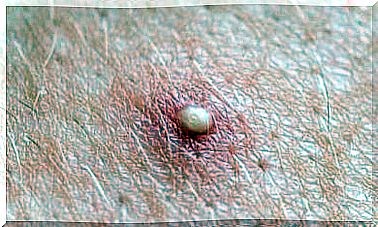Foley Catheter: Find Out What It Is And How It Is Used

A Foley catheter is a type of flexible catheter that is used to drain urine out of the bladder. For this reason, it is also commonly known as a urinary catheter or bladder catheter.
The tube material is usually latex because it is more comfortable for the patient due to its properties. However, if a person is allergic to latex, a Foley catheter made of a different type of plastic may be used to keep the instrument sterile to avoid infection.
As a curiosity, it should be noted that these probes owe their name to Dr. Foley, an American surgeon. Moreover, as we will explain later, this urological tool is very often used in medical practice.
How is a Foley catheter constructed?
The Foley catheter is inserted through the urethra and must reach the bladder, therefore it is shaped like a tube that must accommodate the different sizes. For this reason, there are different types of catheter for children, women, and men. There are also catheters with a variety of cross-sections to better accommodate the specific anatomical features of each patient.
Therefore, a special scale has been developed to describe the size of the catheters. This is the French Charriere scale where one unit is 0.33 mm. The number of Charriére units corresponds to the size of the circumference of the catheter in millimeters. This means that knowing the number of Charriére units (represented by the symbol F) we can know the diameter of the probe, and therefore the urethra.

Despite the existence of a range of Foley probes, they all have one thing in common. Namely, the catheter tube always connects to the inflatable balloon which is deflated in the complete set.
The balloon is a key component to the proper functioning of the Foley catheter as it is the only component in ensuring that the probe does not fall out.
How is a Foley catheter properly inserted?
Before inserting the catheter, carefully check the probe for damage. Nowadays, manufacturers’ companies carry out very stringent quality checks, but it is not uncommon for a probe to create problems because it is simply defective.
To check if the probe is working properly, put sterile water into the nozzle in the balloon. If we see that the balloon swells and there are no water leaks, the probe can be attached to the patient.
The patient’s genitals must be perfectly clean. Using a small amount of lubricant or lubricant, carefully insert the probe through the urethra. To facilitate the tube entry into the bladder, you can build up pressure in the abdominal cavity by performing breathing maneuvers or by simulating urination.
Once the tube is inserted into the bladder, the balloon must be inflated to prevent the tube from escaping. Using a syringe, fill the balloon with air or sterile water through a nozzle with a small valve.
Finally, the catheter valve itself should be connected to the bag so that urine does not leak out. To facilitate volume measurement, the bag usually has graduations, most often given in milliliters.
What is a Foley catheter for?
The most common indications for a Foley catheter are:

- Urinary incontinence: is a common disorder in the elderly and patients who have sustained neurological damage in which the nerves responsible for urinating are affected.
- Any situation that prevents the bladder from emptying completely: this includes prostate cancer, for example.
- Patients who have undergone surgery and need to control the volume of urine removed.
What are the disadvantages of a Foley catheter?
The main concern when using a Foley catheter is the risk of urinary tract infection. The catheter remains, as a foreign body, placed in an area where bacteria can penetrate from the outside of the genitals into the bladder. For this reason, we must pay special attention to private hygiene when using the catheter.
In addition, it is important to prevent the drainage bag from twisting. This could disrupt the flow of urine and cause it to accumulate retroactively. A simple way is to attach the catheter to the thigh with adhesive tape or, if the patient is in bed, hang the bag under the bed so that the urine flows under the force of gravity.









